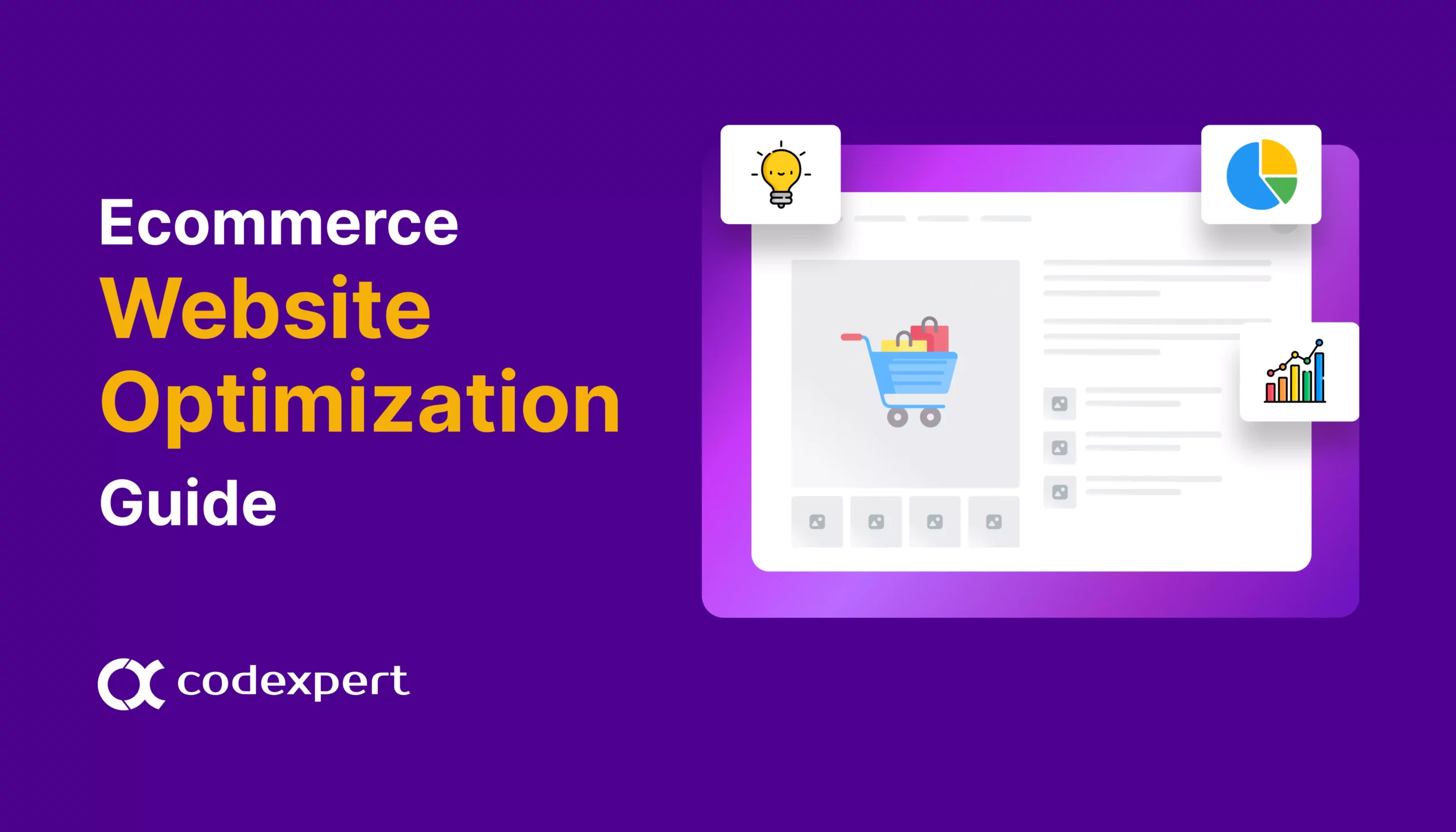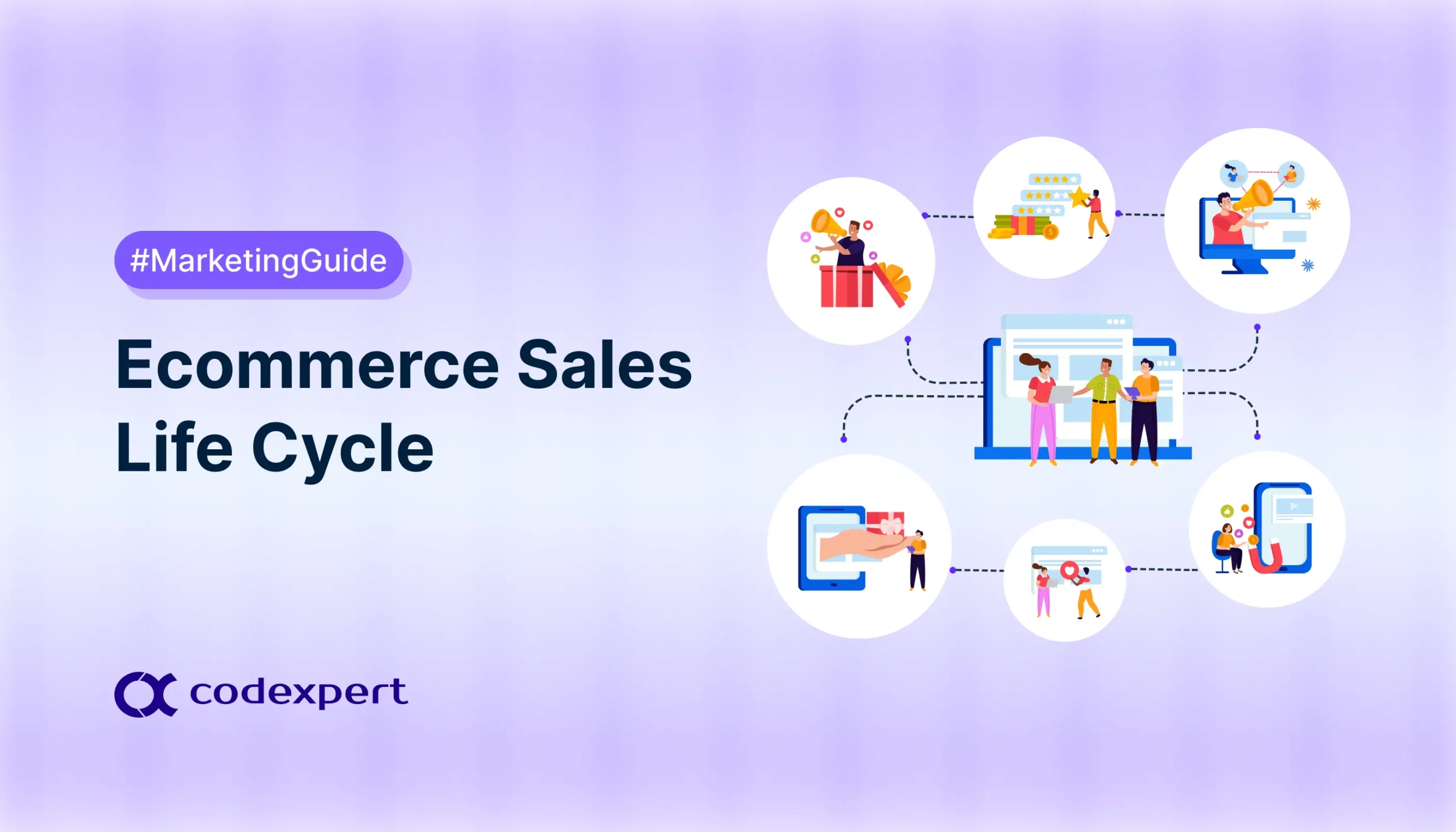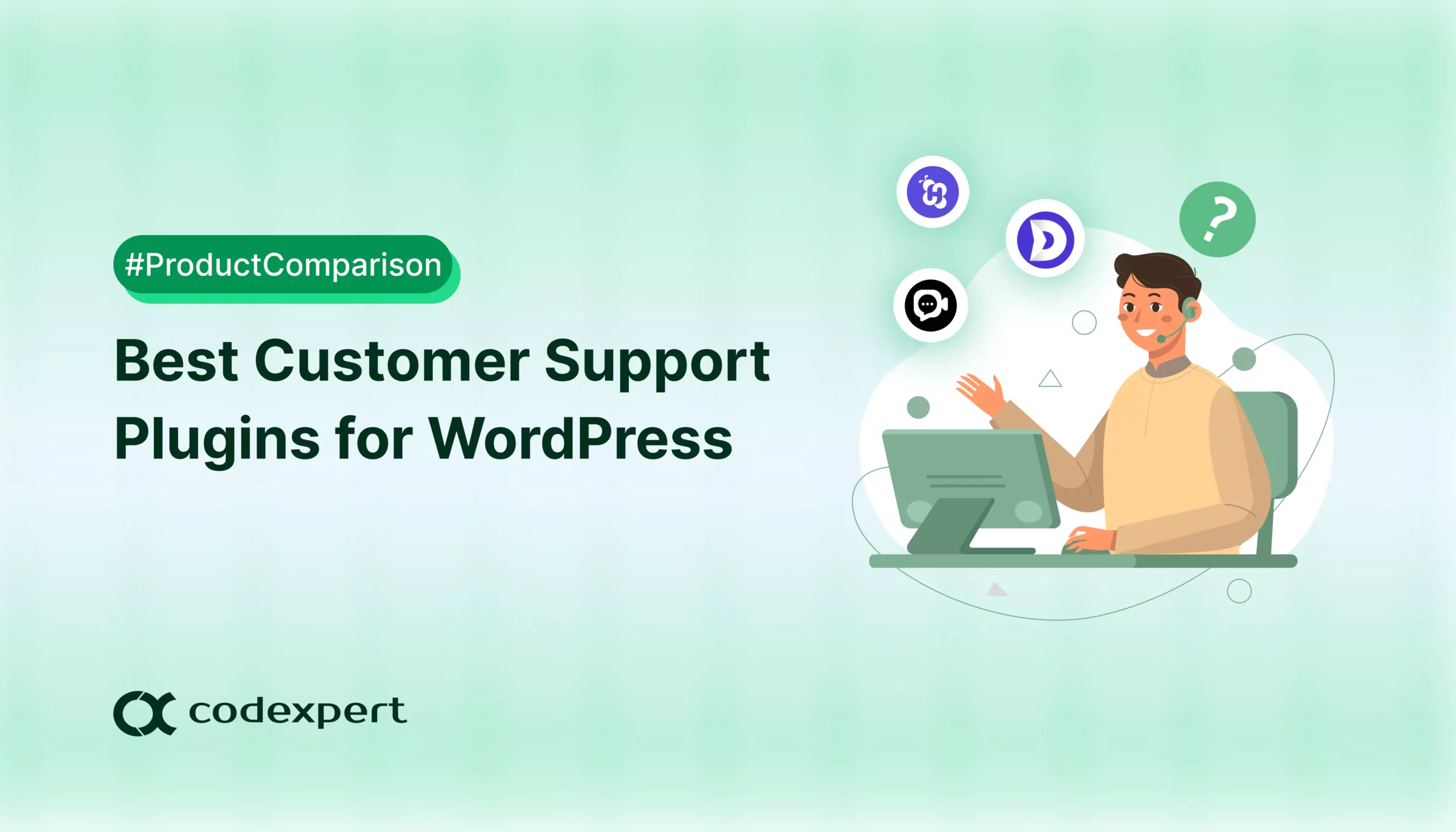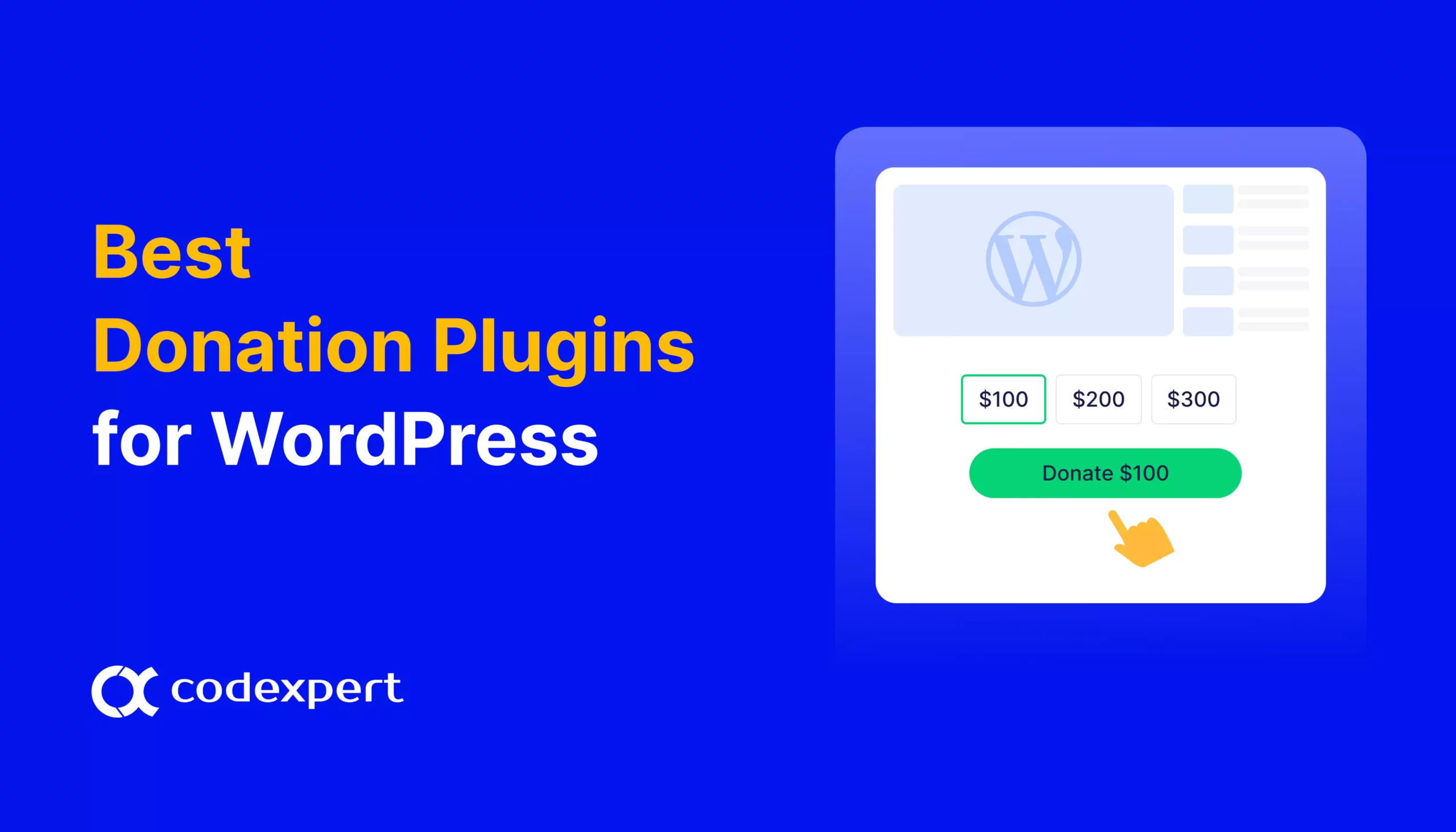Ecommerce Website Optimization: A Step-by-Step Guide

Is your ecommerce store not performing the way you hoped? You are not alone. Every day, thousands of ecommerce businesses lose money due to suboptimal website performance.
While it may seem like a lot of effort to optimize your website, we’re here to show you just how simple and straightforward it can be. By the end of this guide, you’ll have a clear roadmap to optimize your online store for maximum performance and profitability.
Let’s get started!
What Is E-commerce Website Optimization?
Ecommerce website optimization is the process of improving your online store to increase sales, enhance user experience, and maximize conversion rates. The process of optimizing your ecommerce website involves different strategies to achieve your desired profits. Everything on your website should be catered to attract visitors and convert them to customers.
In the next section, we will explore how and the steps involved in optimizing your online store for search engines.
How to Optimize Your Ecommerce Website for Search Engines?
With proper SEO strategies, you can improve the visibility of your ecommerce site in search engine results pages (SERPs) to get organic traffic to your ecommerce site. And when you have visitors on your website there are more likely to generate sales.
Here are some tips to optimize your ecommerce website for search engines –
Step 1: Research Keywords & Develop a Keyword Strategy
The first and most important step of website optimization is doing keyword research. It is the process of presenting your product online in a way that aligns with how people search for it.
Following this information, you can easily optimize your ecommerce site to generate more traffic. If you are new to ecommerce or online shopping, doing proper keyword research is a must.
First of all, you need to determine which keyword you should target. Then, you can apply the best methods to rank higher for those keywords. Now, how do you know which keywords people usually search for the most and which ones to target?
You can start the process using Google free tools like Keyword Magic Tool. Follow along to learn about the process of using this tool to research your keywords –
1. Open the link, click on Keyword Magic Tool, provide the keyword on the search field, and click the Search button.
2. The tool will automatically generate a list of thousands of keyword suggestions for your ecommerce business.
Now that you have the list of keywords, you have to focus on three key factors to perform better for your ecommerce website, which includes –
- Search Intent (what users are looking for)
- Search Volume (how many people search for that keyword)
- Keyword Difficulty (how much is the competition for this keyword)
Semrush Search Intent Overview
When you search for a topic like “Buy Nike Shoes” in a search engine, your intention is clear—you want to purchase Nike shoes. You expect to see Nike products or a preferred store in the search results.
For instance, if someone searches “What is a good bike?” they are seeking information about bikes and exploring options. Another example could be “Ducati vs Ninja,” where the user is comparing two products or services to analyze their options.
In summary, these examples highlight four main types of search intent.
- Navigational
- Informational
- Commercial
- Transactional
You can also easily filter and categorize the search intent from the Semrush Intent. For this, you need to click on Intent and then Apply, shown below.
Semrush Search Volume and Keyword Difficulty Overview
Search volume and keyword difficulty are important parts of combining your keywords, based on your business. You will find two types of keywords for your business. One is the seed keyword and the long tail keyword.
Long tail keywords are less competitive than the seed keywords, so you may wonder why should you spend your time on less popular keywords. Combining seed and long tail keywords increases your chances of ranking higher for your chosen keywords.
However, seed keywords (like “Nike” or “Tennis Rackets”) can be more challenging to rank for due to their broad and competitive nature. Here is the way to identify the search volume and keyword difficulty –
Go to the Semrush website, enter the keyword into the search form, and click the Search button.
You will get your keyword difficulty and volume on the same page. This will show you the results of your keyword, within a specific area.
There are some other popular tools available for your ecommerce keyword research, which include Moz Keyword Explorer, Ahrefs Keyword Generator, and more.
Step 2: On-page SEO Optimization
On-page SEO is another term to help with your search engine rankings. To apply this, you have to become a master of keyword placement. But don’t worry, we’ll help simplify this process for you.
Start by choosing a primary keyword for each page and use it for each page following section –
- Title: You have to incorporate the keyword you have chosen in your page’s title page. This will help you rank better in search results.
- Heading: Use your keyword in your main heading and the supporting subheading.
- Meta Description: You need to make sure your meta description includes the keyword, which will improve the click-through rate.
- Product Description: Add the keyword naturally to the main content, whether it’s an article, product description, or landing page copy.
Now to truly succeed with your SEO, you need a well-rounded strategy that goes beyond basic optimizations. Here is how to cover all the essential elements –
- Create a Clear Website Structure: A well-organized layout with clear categories and subcategories helps visitors and search engines find what they are looking for. You need to make navigation simple and intuitive to enhance the user experience and this way you can keep people engaged in your website.
- Technical SEO: When a new website is built, you have to focus on things like fast page load times, mobile-friendly design, and clean URLs. And optimize XML sitemaps to make your site search engine-friendly.
- Engage with High-Quality Content: Content is what draws people in. You can write blog posts, guides, or create videos using a video editor that answer questions, solve problems, or entertain your audience. The more valuable your content, the more likely people will stay on your site and share it with others.
- Build Credibility with Backlinks: When other reputable sites link to yours, it signals to search engines that your content is worth sharing. You need to focus on earning links by creating content that is genuinely useful, building partnerships, or contributing to industry sites.
Step 3: Optimize Product Page layout
A perfect product page combines clear content, intuitive design, and functionality to guide your visitors toward buying from your site. Here’s what makes a standout product page –
- Clear Call-to-Action
- High-Quality Images and Videos
- Detailed Product Information
- Social Proof
- Mobile Responsiveness
1. Clear Call-to-Action
A clear and visible CTA like Buy Now or Add to Cart helps customers know what to do next. It may overlooked if the CTA is hard to find or below the fold. When you are creating the page for your products, place it above the fold so users can see it immediately.
Source: CoDesigner
2. High-Quality Images and Videos
Studies show that visual content gets 94% more views than text (WebFX, 2024). Great product page images and videos can make or break your product page, so you must focus on clear and high-resolution images to showcase your products.
Provide fast-loading file formats (WebP), multiple views of the products and their variant (Color and sizes), videos showing the product in action, etc.
Source: Skims
3. Detailed Product Information
Clear product details help customers make informed decisions about purchases. Now, if you’re wondering what detailed product information looks like, here’s a clear overview –
- Specifications: List sizes, materials, care instructions, and technical details of your products.
- Aspirational Content: Paint a picture of how the product fits into their life (an eco-friendly water bottle for hikes or yoga).
- Payment Options: Show secure payment methods like PayPal, and mobile wallet options.
- FAQs and Shipping Info: Answer common questions and clearly outline shipping costs.
- Product Recommendations: Suggest related or complementary products.
4. Social Proof
Social proof is another important thing you should display on your product page, as it reassures buyers that other people trust and like your product. Here’s a list of social proof you can include –
- Reviews, ratings, and user testimonials.
- Photos and videos from real customers.
- Logos of publications that featured your brand.
- Social media stats like shares or recent posts.
- Trust badges like “Verified Purchase.”
- Real-time data, like recent purchases or low stock alerts.

Source: WC Affiliate
5. Mobile Responsiveness
According to Statista, estimates indicate that revenue from mobile commerce will reach approximately 2 trillion US dollars. So, you have to make sure, your product page works seamlessly on smaller screens as well.
To do this, you must ensure that –
- The page fits well without zooming or scrolling.
- Make buttons easy to tap and forms simple to fill out.
- Let users view product details with gestures like pinch-to-zoom.
- Optimize images, videos, and text for all screen sizes.
Optimize Your Ecommerce Website for Conversions
Step 1: Enhance Site Load Time and Speed
A fast-loading ecommerce website can significantly boost conversion rate. Research shows that websites that load under 1 second often see up to three times higher conversions.
By using EasyCommerce a WordPress eCommerce plugin, you can easily build a faster, optimized store for your business.
An optimally fast website not only reduces bounce rates but also improves the likelihood of visitors making a purchase. If your site takes more than a few seconds to load, they are likely to leave without buying anything.
To ensure your website is performing at lightning-fast speed, focus on these key optimization strategies –
- Enable browser caching to allow returning visitors to load your site faster.
- Minimize HTTP requests by reducing unnecessary scripts, plugins, and design elements.
- Use an AI-powered WordPress eCommerce plugin (EasyCommerce) to build an online store with modern features.
- Compress and optimize your product images to improve load times and overall site performance.
- Utilize a CDN (Content Delivery Network) to deliver your content more efficiently across various geographic locations.
Tip: You can use tools like PageSpeed Insights or DebugBear to measure your site performance
Step 2: Implement Different CRO Strategies
1. Create Urgency
Creating urgency is an easy way to quickly increase your conversion rate. You can apply this strategy to your website, as well as to your marketing strategy. You can implement different forms of urgency, including –
- Limited-time offers.
- Countdown timers.
- Low-stock indicators.
Source: BUOY
Tip: To implement these Conversion Rate Optimization (CRO) strategies and manage your time better, use tools like OptinMonster, and Countdown Timer Widget. You can also implement popular CRM in your marketing strategy to apply these strategies.
2. Upsell
Upselling involves recommending complementary products to enhance the customer’s purchase. For example, you could suggest pairing a set of glasses with a related item to existing customers, encouraging them to buy both together.
Source: PotteryBarn
3. Flash Sales
You can also attract potential customers with flash sales. Try an attractive template for an email campaign that comes with a lucrative discount.
.
Source: BareBones
Step 3: Make Checkout Journey Super Smooth
Checkout is the most important part of any shopping journey. There are many things you can implement to make your checkout process easy for your customers –
- Simply the design layout: Use a clean layout with clear product details, prices, and product images. Also, highlight key actions like “Proceed to checkout” or “Continue Shopping”
- Enable Guest Checkout: Allow users to complete purchases without creating an account. You can offer account creation as option step after checkout.
- Offer Multiple Payment Options: Provide various payment methods, including debit/credit cards, local payment system.
- Optimize Form Fields: Minimize the number of fields to only essential information like shipping address, payment details. Alternatively, use autofill, dropdown menus, and validation to save time and reduce errors.
- Show Transparent Costs: Clearly display all costs upfront, including taxes, shipping, and any discount applied.
Source: OmegaWatches
Step 4: Analyze User Behavior
Once everything is set up, focus on understanding the behaviors of your existing and potential customers. You can easily track every visitor’s movement by using analytics heatmaps, and session recordings for user behavioral insights.
These features will help understand where your users interact most, like click, and where they focus on any particular section of the web page.
Tip: Use Google Analytics to track your every visitor’s interactions. For tracking clicks, you can use Google Tag Manager, and for video sessions use Hotjar or Clarity.
Wrapping Up
Your ecommerce website is more than just an online store—it’s the foundation of your brand’s digital presence. By following the strategies outlined in this guide, you can transform your website into a high-performing, user-friendly platform that attracts visitors, keeps them engaged, and drives sales.
You need to remember that, optimization isn’t a one-time task; it’s an ongoing journey. Utilize tools like Google Analytics, PageSpeed Insights, and SEMrush to track progress and refine your approach. With time, dedication, and the right strategies, your ecommerce store can reach its full potential.
Take action today, every small improvement brings you closer to big results!
Frequently Asked Questions(FAQs)
Q. What happens when you optimize a website?
When you optimize a website, you improve its performance, user experience, and visibility on search engines. This can include faster loading times, mobile-friendly design, better navigation, and higher search engine rankings. Optimization helps attract more visitors, keeps them engaged, and increases the chances of conversions.
Q. How to increase website speed?
To improve website speed, minimize file sizes by compressing images and videos, enable browser caching, and use a content delivery network (CDN). Ensure your site’s code is clean and lightweight, reduce redirects, and consider upgrading to faster hosting services. Regularly test your site to identify and fix speed issues.
Q. What is website structure optimization?
Website structure optimization is organizing your site’s layout and content in a logical, easy-to-navigate way. It includes creating a clear hierarchy with categories, subcategories, and internal links. A well-optimized structure makes it easier for users to find information and helps search engines understand your content, improving rankings and user experience.
Q. How do I test my website performance?
You can test your website’s performance using tools like Google PageSpeed Insights, GTmetrix, or Pingdom. These tools analyze your site’s speed, usability, and overall performance. They also provide actionable suggestions to address issues like slow loading times, broken links, or large file sizes.
Subscribe to Our Newsletter
Get the latest WordPress tutorials, trends, and resources right in your inbox. No Spamming, Unsubscribe Anytime.

Thank you for subscribing to our newsletter!
Table of Content
- What Is E-commerce Website Optimization?
- How to Optimize Your Ecommerce Website for Search Engines?
- Step 1: Research Keywords & Develop a Keyword Strategy
- Step 2: On-page SEO Optimization
- Step 3: Optimize Product Page layout
- 1. Clear Call-to-Action
- 2. High-Quality Images and Videos
- 3. Detailed Product Information
- 4. Social Proof
- 5. Mobile Responsiveness
- Optimize Your Ecommerce Website for Conversions
- Step 1: Enhance Site Load Time and Speed
- Step 2: Implement Different CRO Strategies
- 1. Create Urgency
- 2. Upsell
- 3. Flash Sales
- Step 3: Make Checkout Journey Super Smooth
- Step 4: Analyze User Behavior
- Wrapping Up
- Frequently Asked Questions(FAQs)
- Q. What happens when you optimize a website?
- Q. How to increase website speed?
- Q. What is website structure optimization?
- Q. How do I test my website performance?













